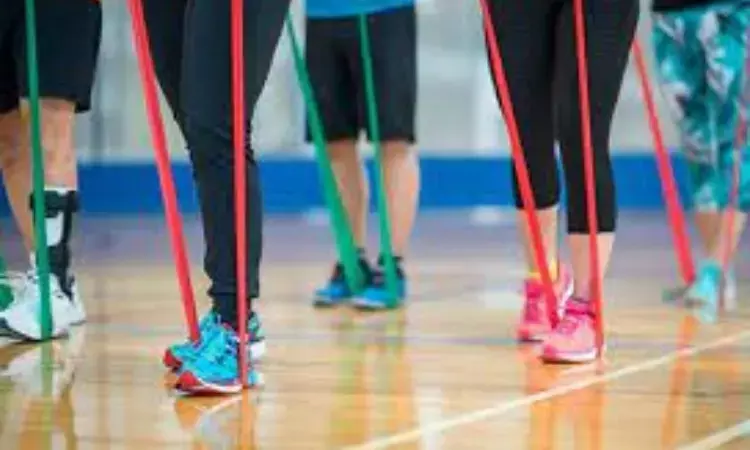- Home
- Medical news & Guidelines
- Anesthesiology
- Cardiology and CTVS
- Critical Care
- Dentistry
- Dermatology
- Diabetes and Endocrinology
- ENT
- Gastroenterology
- Medicine
- Nephrology
- Neurology
- Obstretics-Gynaecology
- Oncology
- Ophthalmology
- Orthopaedics
- Pediatrics-Neonatology
- Psychiatry
- Pulmonology
- Radiology
- Surgery
- Urology
- Laboratory Medicine
- Diet
- Nursing
- Paramedical
- Physiotherapy
- Health news
- Fact Check
- Bone Health Fact Check
- Brain Health Fact Check
- Cancer Related Fact Check
- Child Care Fact Check
- Dental and oral health fact check
- Diabetes and metabolic health fact check
- Diet and Nutrition Fact Check
- Eye and ENT Care Fact Check
- Fitness fact check
- Gut health fact check
- Heart health fact check
- Kidney health fact check
- Medical education fact check
- Men's health fact check
- Respiratory fact check
- Skin and hair care fact check
- Vaccine and Immunization fact check
- Women's health fact check
- AYUSH
- State News
- Andaman and Nicobar Islands
- Andhra Pradesh
- Arunachal Pradesh
- Assam
- Bihar
- Chandigarh
- Chattisgarh
- Dadra and Nagar Haveli
- Daman and Diu
- Delhi
- Goa
- Gujarat
- Haryana
- Himachal Pradesh
- Jammu & Kashmir
- Jharkhand
- Karnataka
- Kerala
- Ladakh
- Lakshadweep
- Madhya Pradesh
- Maharashtra
- Manipur
- Meghalaya
- Mizoram
- Nagaland
- Odisha
- Puducherry
- Punjab
- Rajasthan
- Sikkim
- Tamil Nadu
- Telangana
- Tripura
- Uttar Pradesh
- Uttrakhand
- West Bengal
- Medical Education
- Industry
Optimal dose of resistance exercise improves tendinopathies, finds BMJ study

In a systematic review published in British Journal of Sports Medicine suggest that low frequencies of high resistance exercise is effective for tendinopathy management. Anastasia Pavlova and team sought to investigate the impact of resistance exercise dose components, including intensity, volume, and frequency, on the management of common tendinopathies.
A comprehensive search of databases yielded 110 relevant studies for analysis. These studies comprised 148 treatment arms involving a total of 3,953 participants across five tendinopathy locations: rotator cuff, Achilles tendon, lateral elbow, patellar tendon, and gluteal region.
The meta-analyses and meta-regressions revealed some consistent patterns that provide valuable insights for clinicians and patients alike. The findings indicated that therapies prescribing higher intensities, achieved through the inclusion of additional loads, were associated with greater efficacy on average compared to therapies solely relying on body mass as resistance. This trend was observed across all tendinopathy locations, emphasizing the importance of incorporating external resistance for optimal treatment outcomes.
Furthermore, the results highlighted the role of exercise frequency in tendinopathy management. Lower frequencies (less than daily) were associated with greater pooled mean effect sizes compared to mid (daily) and high frequencies (more than once per day). This suggests that allowing for adequate recovery time between resistance exercise sessions may create stronger stimuli for tendon adaptation and improved recovery.
In contrast, the relationship between training volume and treatment effectiveness was less conclusive. The evidence for associations between training volume and pooled mean effect sizes was minimal and inconsistent, indicating that volume alone may not have a significant impact on tendinopathy outcomes.
Overall, this meta-analysis underscores the importance of considering resistance exercise dose components in the management of tendinopathies. By prescribing therapies with higher intensities and lower frequencies, clinicians may provide patients with stronger stimuli for tendon adaptation and facilitate adequate recovery. These findings have the potential to enhance the efficacy of tendinopathy management strategies and improve patient outcomes.
Source:
Pavlova, A. V., Shim, J. S. C., Moss, R., Maclean, C., Brandie, D., Mitchell, L., Greig, L., Parkinson, E., Alexander, L., Tzortziou Brown, V., Morrissey, D., Cooper, K., & Swinton, P. A. (2023). Effect of resistance exercise dose components for tendinopathy management: a systematic review with meta-analysis. In British Journal of Sports Medicine (p. bjsports-2022-105754). BMJ. https://doi.org/10.1136/bjsports-2022-105754
Neuroscience Masters graduate
Jacinthlyn Sylvia, a Neuroscience Master's graduate from Chennai has worked extensively in deciphering the neurobiology of cognition and motor control in aging. She also has spread-out exposure to Neurosurgery from her Bachelor’s. She is currently involved in active Neuro-Oncology research. She is an upcoming neuroscientist with a fiery passion for writing. Her news cover at Medical Dialogues feature recent discoveries and updates from the healthcare and biomedical research fields. She can be reached at editorial@medicaldialogues.in
Dr Kamal Kant Kohli-MBBS, DTCD- a chest specialist with more than 30 years of practice and a flair for writing clinical articles, Dr Kamal Kant Kohli joined Medical Dialogues as a Chief Editor of Medical News. Besides writing articles, as an editor, he proofreads and verifies all the medical content published on Medical Dialogues including those coming from journals, studies,medical conferences,guidelines etc. Email: drkohli@medicaldialogues.in. Contact no. 011-43720751


